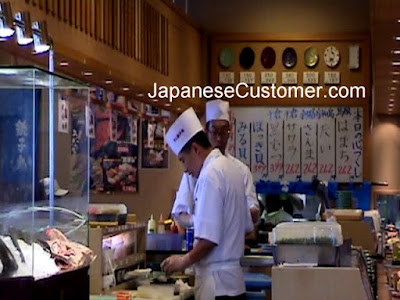The Japanese never do anything by halves, it's 150% or nothing. Customer service is a great example. If we look at Japanese customer service we can see that every point of contact with the customer has been thoroughly dissected, planned, and catered for. Japan has a tradition whereby customer service is deeply ingrained into the culture and is reflected in everyday life.
For example, in the Japanese language, there are a specific set of words, sentences, and structures that is used just for talking and dealing with customers called Keigo.
It is a very polite form of speech that is used in shops, on the telephone, and in advertising. For Example: as you enter any store in Japan you will be greeted with the words irreshaimasae, (welcome to our store).
The store attendant will greet you okyakusama, (my customer). It is the beginning of a company's contact with a customer and sets the tone for the ongoing relationship.
Body language is another component of Japanese customer service. As you enter a store in Japan the shop attendant will welcome you and offer a deep bow to acknowledge and welcome you to the store. This occurs at convenience stores, banks, greengrocers, bicycle repair shops, and restaurants.
Let me provide an example of everyday customer service that I experienced while living in Japan. Needing a TV, I purchased an all-in-one model from a local electrical store and arranged the delivery.
Delivery day came and as a customer, I was excited to be receiving my new TV. In true Japanese style, at 9.55 am, five minutes before the agreed time, I heard a van pull up outside my apartment and my building door open. A delivery driver in a light blue uniform with white gloves, a hat, and a name tag knocked at my door gently and called my name. Clipboard in hand he confirmed my purchase and asked me to sign a delivery receipt. He then gave me a deep bow and returned to the van to retrieve the TV not before bowing again and saying, chotto matte kudasai (just a moment please). He removed his shoes at the entrance to my apartment, took off his hat, and placed the huge box on the floor of my tiny room, two meters by two-meter wide room, typical student accommodation.
Then he opened the box, removed all the packaging, and asked where I would like the TV positioned in the room. Then he connected the aerial and switched the set on and checked that everything was in order. He collected all the packaging, looked at me and bowed, thanked me for my purchase, and walked out of the room backward still facing me. When he reached the front door he put his shoes back on, replaced his hat, and then bowed one more time before leaving the building. Everything was set up and working by 10 am, the agreed delivery time.
After a few weeks of use, the video player stopped working and the tape could not be ejected. I returned to the store of purchase, spoke with the sales staff, and explained the problem. Store staff took down my details and called the manufacturer in front of me and made an appointment for a service call in two days' time.
On the day and time arranged, the representative from the manufacturer visited my apartment. I expected him to collect the TV and return it to a service center for repair so I waited at the front door of my apartment block with the TV. He got out of his van and looked at me and motioned me to take the TV back inside. The repairman carried his tool kit and a blanket inside. He removed his shoes at the entrance, bowed as he entered the room, and then neatly unfolded the blanket and placed the TV on it. A few minutes later the whole unit was unrecognizable. Pieces of metal and plastic were all over the blanket.
Quickly the problem had been found and rectified with a new part. The problem was wet playing heads caused by condensation. If I was to use my rice cooker in the room, I had to open the window to let out the hot fumes otherwise the video player heads would be damaged. With a smile, the repairman reassembled the TV and packed up his tools. The problem was found and fixed within 20 minutes of arrival.
How can you grow your business in five ways by applying these service techniques?
1. Fully dissect your business and understand all the points at which a customer has contact with your company. Plan how you want the customer to be treated and set up a system to meet your requirements and then test the system until it works well every time.
2. Hire the right kind of people to work with customers. People who are patient and like working with people. Train employees in all aspects of the business, not just one job function.
3. Hire enough people to make sure that every customer is well catered for even at the busiest times.
4. Equip your frontline staff to handle a problem from start to finish.
5. Plan to be in business for the long term so your customer service becomes your best marketing tool. Higher customer retention leads to higher sales.
#japan #japanesecustomer #casestudy #customerservice #business #growth
© Copyright, JapaneseCustomer.com. 2013. All Rights Reserved.




